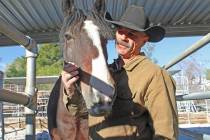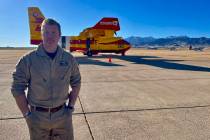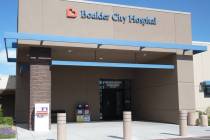Be on lookout for early signs of strokes
Living with a disability of any kind can be a struggle. Millions of Americans fight on a daily basis to keep up with their daily routines. Disabilities can come in many different forms ranging from small to large, both mental and physical.
One of the more common methods of uninherited physical and mental disabilities is strokes. A stroke is the No. 1 leading cause of all long-term disabilities in America. One happens every 40 seconds somewhere across the nation, mostly affecting men and women older than the age of 65. Strokes will inadvertently have some sort of direct impact on four out of every five people in America.
Here are a few helpful early warning signs of strokes, stroke recognition and how to respond to someone having a stroke.
What is a stroke?
A stroke, or a cerebrovascular accident, as it’s known in the medical field, is an injury to the brain as a direct result of not receiving oxygen-rich blood to the tissues. This accident can be caused by one of two different ways: occlusive or hemorrhagic. For an occlusive stroke, the vasculature that supplies the brain with oxygen-rich blood becomes obstructed or cut off by a free floating embolism or clogged by a thrombus (blood clot). The other would be hemorrhagic, where the blood vessel in the brain “burst” or breaks and leaks into the surrounding space around the brain. In either case the end result is the same: Blood tissue does not receive oxygen and tissue damage occurs, and the part of the brain that is affected loses its ability to function and operate normally.
Early signs of stroke
So you’re thinking, how will I know if I am having a stroke? The classic stereotypical signs paramedics are looking for fall into three categories: speech, arm drift and facial drift. Someone who is suffering from a stroke will likely have slurred or inappropriate words. Their normal speech patterns will not be present, and they will have an abnormality to their speaking that will be evident that something is wrong.
Typically when one half of the brain is affected it will be evident throughout the entire body. Facial and arm drift may or may not happen concurrently. You will notice a loss of balance and coordination on one side of the body or the other. You may notice the muscles on the face will become flaccid and weak. One half of the face will be saggy or droopy while the other half may appear to be completely normal. Same goes for the arm drift.
A part of the test we use in the field to determine if a patient is having a stroke is called the Cincinnati Stroke Scale; we have the patient close his or her eyes, hold both arms out in front, palms up, and look for one half of the body to respond. If and when we notice one half of the body is unable to hold muscle tone or the patient has a complete inability to hold one of his or her arms up, it is typically a good indication he or she is having a stroke. A decrease in sensation such as numbness, altered mental status, an inability to swallow, altered smell, taste, vision or hearing, as well as altered breathing or heart rate are also signs and symptoms of a stroke.
What should be done for a stroke?
You need to call 911 immediately. This is a life-threatening incident that does not need to be delayed. There is a time frame in which doctors are able to either give medications or physically break up the embolism or thrombosis that is causing the occlusive injury, or perform surgery to stop the bleeding in a hemorrhagic stroke.
Stroke centers vary from facility to facility but generally the fastest the better. Most doctors would prefer to see the patient within the hour and may be able to give certain “clot-busting” medications as many as four hours after the stroke.
Paramedics on the scene will be rapidly assessing the patient for any neuro deficits to evaluate the extent of the injury and to preserve the ABCs of life: airway, breathing and circulation.
If you have any other questions regarding strokes, stroke care or additional warning signs, call me at the fire station at 702-293-9228, or check out www.Strokecenter.org.
Brian Shea is a Boulder City paramedic/firefighter.











